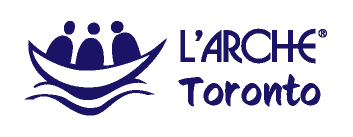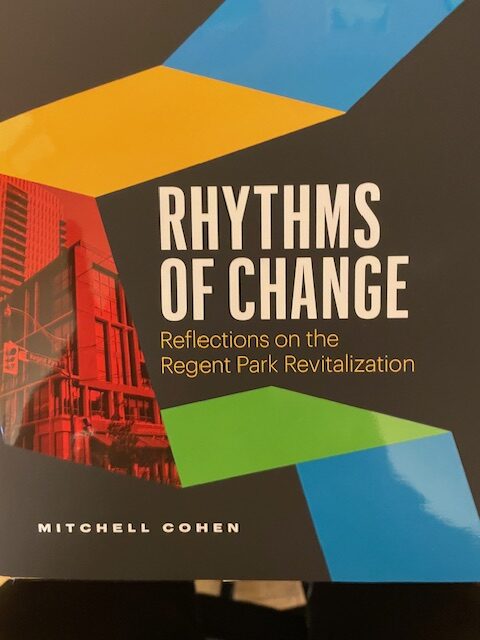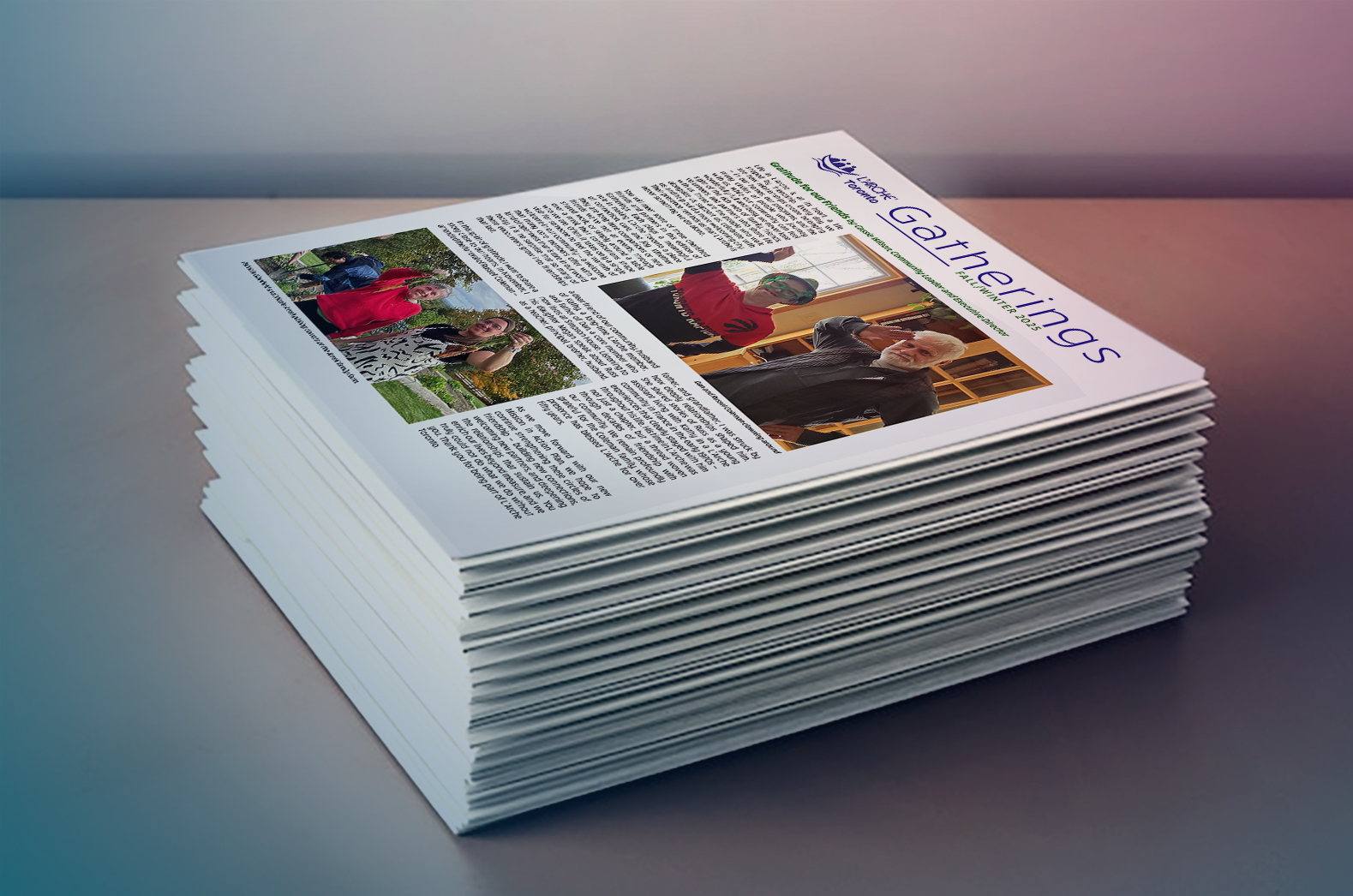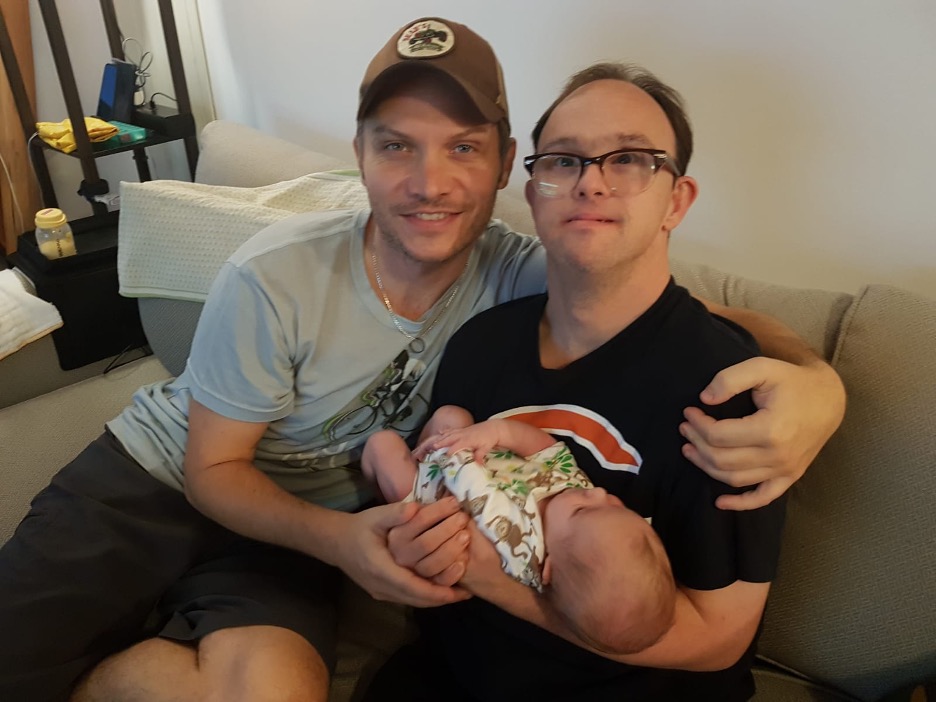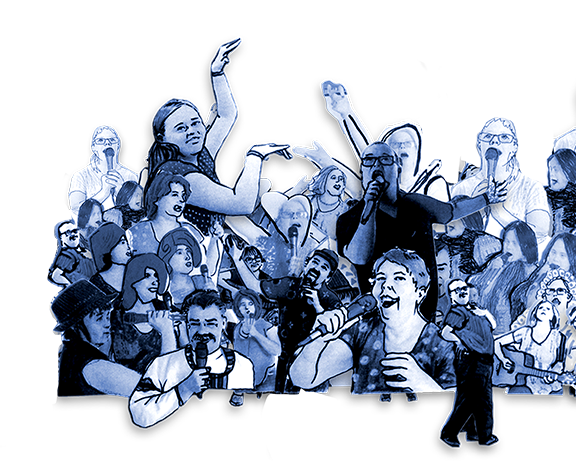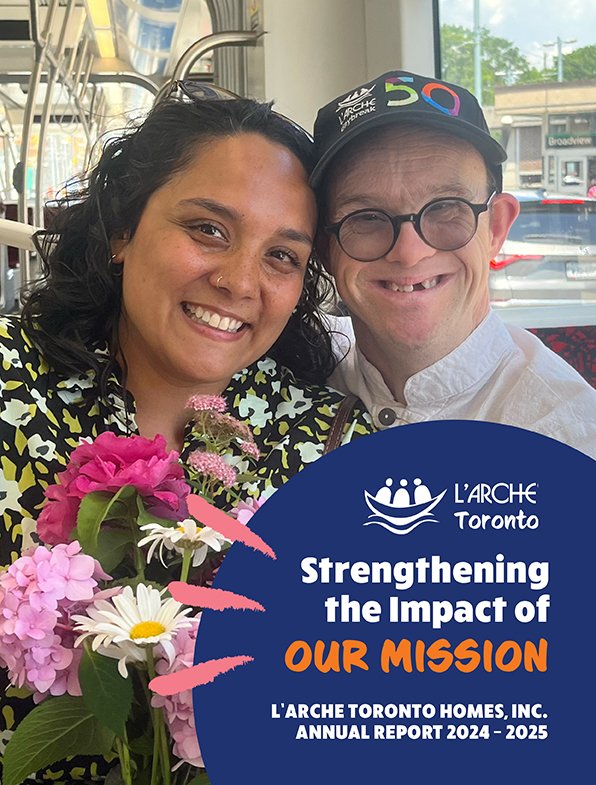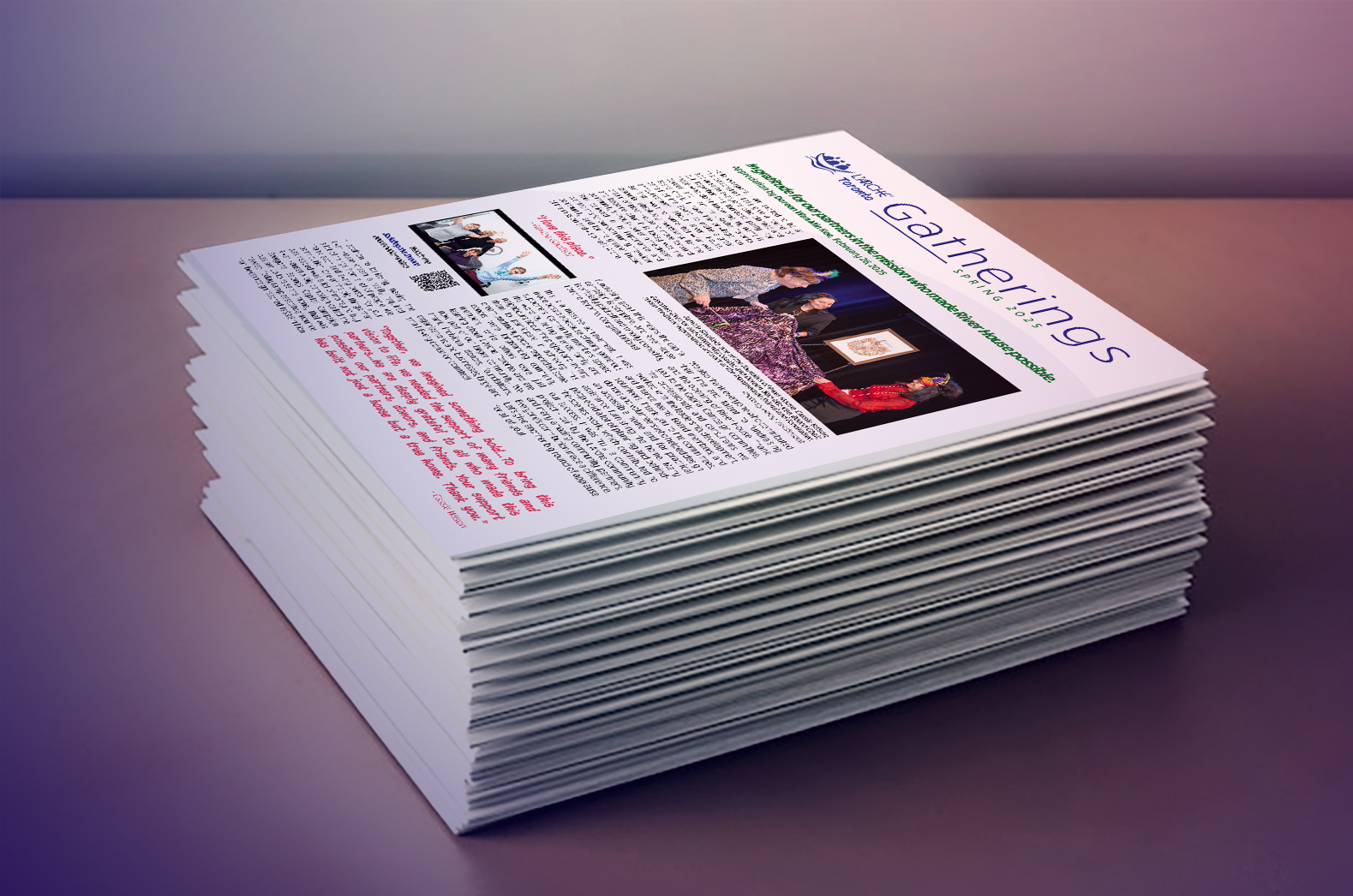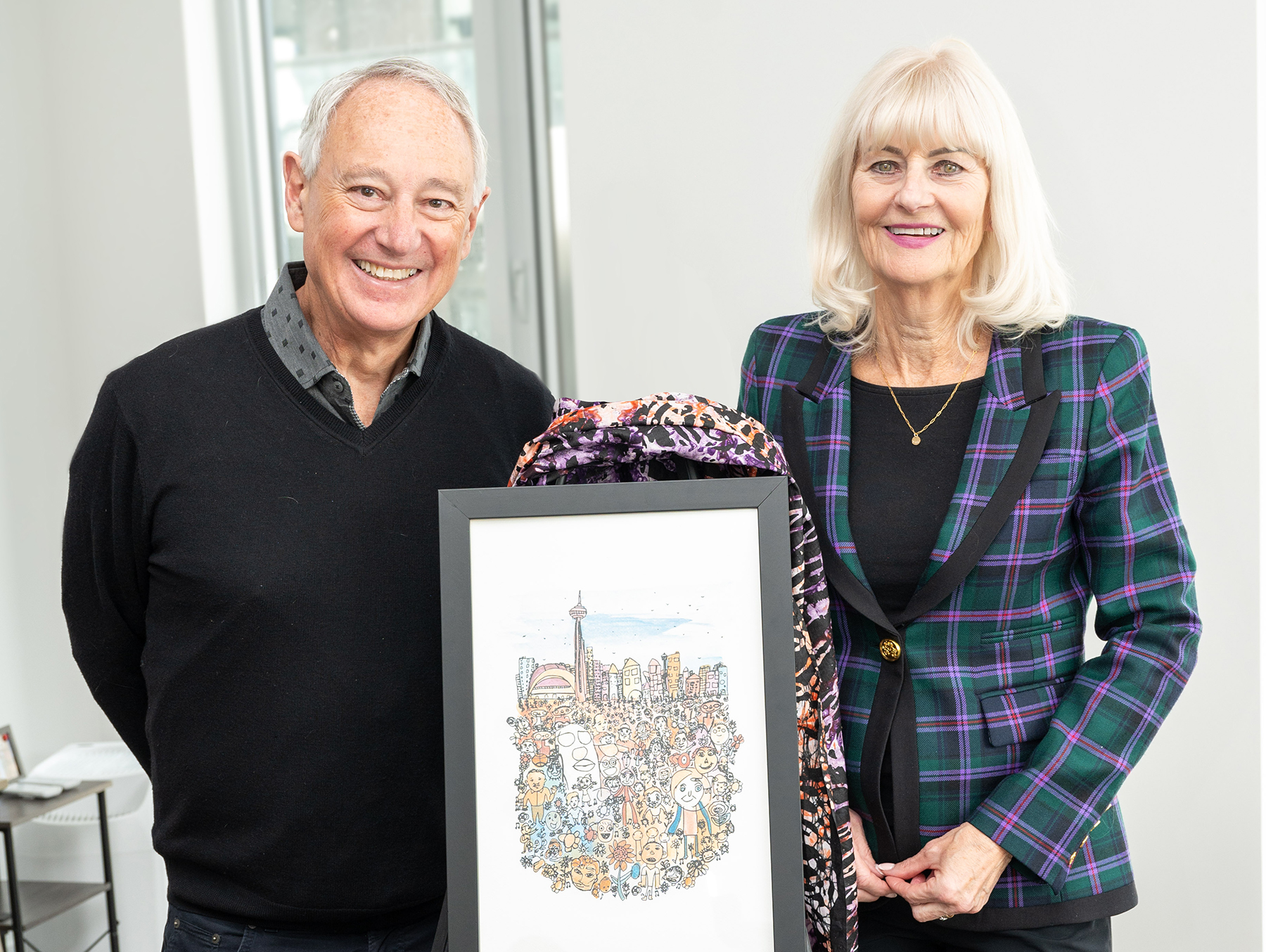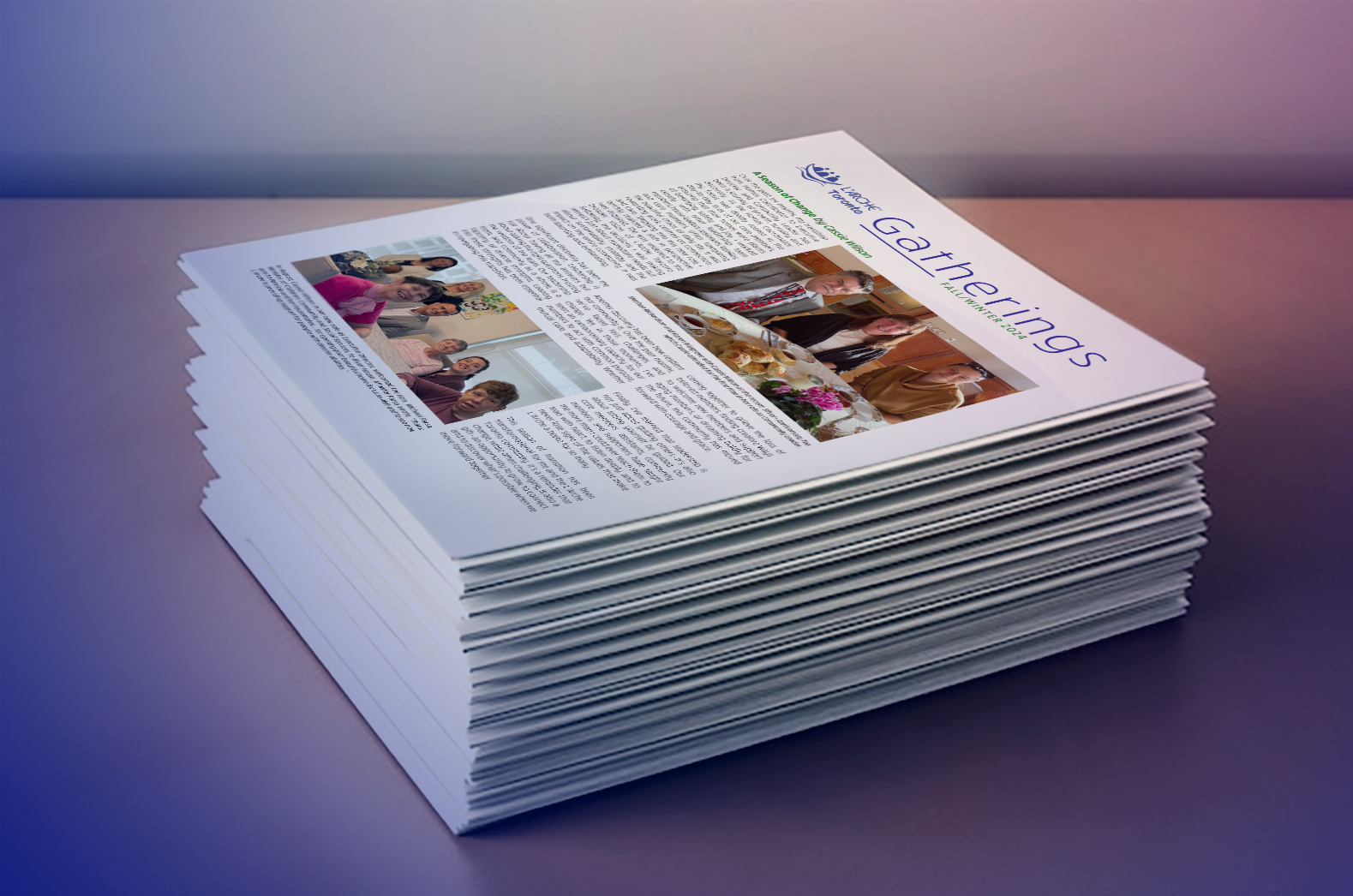In November 2024, members of L’Arche Toronto attended a book launch for Rhythms of Change, a new book by Mitchell Cohen. Mitchell is a social activist, musician and president and CEO of The Daniels Corporation, the developer of the first phases of the Regent Park revitalization including the buildings that house our new River House and the Trying It on For Size (TIFS) apartment.
Rhythms of Change draws from Cohen’s personal reflections on the 18-year transformation of Regent Park, in partnership with Toronto Community Housing (TCHC) from an isolated and stigmatized neighbourhood, to the diverse, vibrant community it is today. It offers a blueprint for urban transformation recognized by UN-Habitat at the 12th annual World Urban Forum.
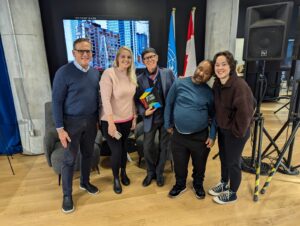
At the book launch, Cohen thanked long-time residents who advocated for change yet also experienced their homes being torn down in the process of transformation, trusting in their “right to return” to something better. He also gave a ‘shout out’ to the new neighbours who are taking part in revitalizing Regent Park, including members of L’Arche. After reading sections from the book, Cohen sang some of his original compositions inspired by the people of Regent Park.
Reflecting on the importance of Regent Park’s unique transformation, Cohen said, “For most of us, the concept of urban renewal is certainly nothing new. Over the years, we’ve all seen or read about urban renewal projects that reflect a heavy-handed, top-down process. The Regent Park revitalization turned that practice on its head, putting local voices and aspirations at the top of the agenda.”
Reflecting Cohen’s love of music, Rhythms of Change, is arranged in ‘verses’ rather than chapters. Here is a selection from “Verse Thirty-Six: An Affordable and Accessible Community.” (pages 214 and 215)
“Accessibility is another essential ingredient of an inclusive community. The bad news is that the building code is the lowest common denominator when it comes to building homes and communities that are truly accessible. The good news is that a movement that took flight in Regent Park is making significant strides to change the dial on accessibility across the country.
Flash back to 2016 when Jake Cohen received feedback from homeowners about accessibility challenges within their suites and common areas. Recognizing the disconnect between what the code requires and what would make a building truly accessible, Jake and Brock Stevenson, of our team, engaged Quadrangle Architects to step up our deliverables on accessibility. In turn, accessible design advocate Lorene Casiez of Quadrangle (now BDP Quadrangle) introduced us to Luke Anderson of StopGap Foundation, known for creating colourful ramps to facilitate accessibility to retail storefronts.
Jake and Brock invited Luke on “roll-through” evaluations in two of our recently completed condominium buildings. Luke, a powerful advocate in the accessibility community, gave us the straight goods. In short: even in code-certified “barrier-free” suites, a person in a wheelchair couldn’t access their balcony or roll into the shower in their home. Many of our common amenity areas were also not accessible.
Those initial conversations led to the implementation of our Accessibility Design Program (ADP), which includes significantly enhanced design standards that Brock, Marco Chow, and other team members are incorporating in new builds across our portfolio. Brock and Marco are also working closely with Rick Hansen Foundation, embracing their expertise and advice to ensure our new buildings achieve Rick Hansen Gold, their highest certification level.

Immediate interest in ADP came from L’Arche Toronto, an organization serving individuals with intellectual disabilities. Jake nurtured that relationship, and ultimately, we co-created River House with Raphael Arens and the L’Arche team, an eight-bedroom unit in our Artworks condominiums at Dundas and River Streets. River House is a living, breathing testament to inclusion, a demonstration of what can be achieved through cross-sectorial collaboration.
Jake, Megan Aird, and other members of the Daniels team also engaged Maayan Ziv and her team from AccessNow to conduct a Regent Park “Map Mission,” identifying what we had done well and where we had totally missed the mark on accessibility.
Luke’s feedback lessons learned from River House and AccessNow’s Map Mission were total eye-openers. We had to do better, so we set out to engage our industry and the accessibility community by creating the Accelerating Accessibility Coalition (AAC). Although it is still in its infancy, significant progress is being made. Developers, builders, designers, and architects, along with StopGap, AccessNow Rick Hansen Foundation, Older Women’s Network, Sunnybrook Hospital, Seneca College, the University of Toronto, and others have coalesced under the AAC banner, spearheaded by the unstoppable Linda Welchel and ULI Toronto’s Richard Joy.
Together, we will build a more inclusive world. Affordable. Accessible. And with a constant effort to close the income disparity gap to ensure that everyone will be welcome in all our communities.’
